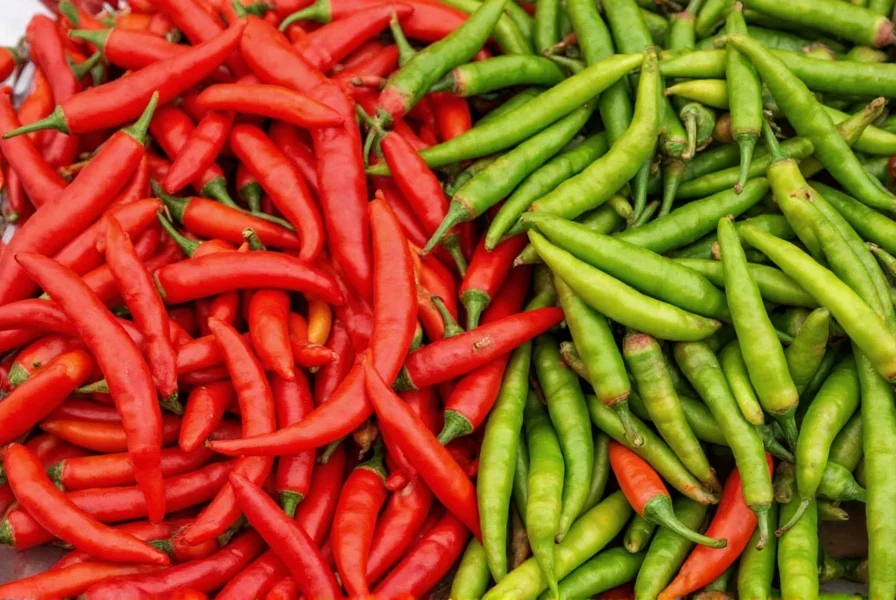Understanding what someone means by 'chili locations' requires clarification, as the term 'chili' has multiple interpretations. In botanical and agricultural contexts, 'chili' refers to hot peppers of the Capsicum genus. In culinary contexts, particularly in North America, 'chili' often refers to 'chili con carne,' a meat-based stew. This article focuses on the geographical regions where chili peppers are cultivated, as this represents the most common informational search intent behind the query 'chili locations.'
Global Distribution of Chili Pepper Cultivation
Chili peppers have a fascinating journey from their origins to becoming a global crop. Archaeological evidence shows chili peppers were first domesticated in Mexico approximately 6,000 years ago. Following Christopher Columbus's voyages, Spanish and Portuguese traders spread chili peppers to Europe, Africa, and Asia, where they quickly integrated into local cuisines.
Today, chili peppers thrive in tropical and subtropical regions worldwide, with certain areas becoming particularly renowned for specific varieties. The global production map reveals distinct patterns based on climate suitability, agricultural traditions, and market demand.
Top Chili-Producing Countries and Regions
China leads global chili production, accounting for nearly half of the world's total output. Mexican varieties like jalapeños and habaneros remain culturally significant, while Thai bird's eye chilies define Southeast Asian cuisine. Each region cultivates distinctive varieties suited to local conditions and culinary preferences.
| Country | Annual Production (Metric Tons) | Notable Varieties | Primary Growing Regions |
|---|---|---|---|
| China | 17,000,000 | Cayenne, Bird's Eye | Sichuan, Hunan, Yunnan |
| Mexico | 2,500,000 | Jalapeño, Habanero, Serrano | Chihuahua, Sinaloa, Jalisco |
| Turkey | 1,800,000 | Aleppo, isot | Gaziantep, Adıyaman |
| Indonesia | 1,700,000 | Bird's Eye, Cayenne | Java, Sumatra |
| India | 1,600,000 | Guntur Sannam, Kashmiri | Andhra Pradesh, Maharashtra |
Climate Requirements for Successful Chili Cultivation
Chili peppers require specific environmental conditions to thrive. They grow best in temperatures between 70-85°F (21-29°C) during the day and 60-70°F (15-21°C) at night. Frost kills chili plants, making them unsuitable for temperate regions without greenhouse protection.
These plants need 6-8 hours of direct sunlight daily and well-drained soil with a pH between 6.0 and 7.0. While chilies tolerate some drought, consistent moisture during flowering and fruit set produces higher yields. Interestingly, moderate water stress can increase capsaicin production, making peppers hotter.
Finding Chili Peppers Locally
For those seeking fresh chili peppers in their area, several options exist regardless of your location. Farmers markets often feature locally grown varieties suited to your climate. Ethnic grocery stores typically carry region-specific chilies that might be harder to find elsewhere.
Growing chili peppers at home has become increasingly popular. Container gardening allows even urban dwellers to cultivate varieties ranging from mild bell peppers to extremely hot ghost peppers. Starting seeds indoors 8-10 weeks before the last frost date gives plants sufficient time to mature.
Chili as a Dish: Restaurant Locations
While this article focuses primarily on chili peppers as a crop, it's worth noting that searches for 'chili locations' sometimes refer to restaurants serving chili con carne. In the United States, regions with strong chili traditions include:
- Texas: Known for its meat-heavy, bean-free chili, particularly in San Antonio and Austin
- Cincinnati, Ohio: Famous for its unique 'Cincinnati chili' served over spaghetti
- New Mexico: Home to distinctive red and green chili varieties used in local cuisine
Food enthusiasts searching for authentic chili dishes should look for regional specialties rather than generic chain restaurants to experience genuine local interpretations.

Understanding Regional Chili Varieties
Certain locations have become synonymous with specific chili varieties due to ideal growing conditions and culinary traditions. The Hatch Valley in New Mexico produces the famous Hatch chilies, available in mild to extra-hot varieties. Thailand's bird's eye chilies pack intense heat in a small package, while Spain's smoked paprika comes from sweet and hot varieties grown in La Vera.
These regional specialties often benefit from protected designation of origin status, ensuring authenticity. For example, only chilies grown in specific regions of Spain can legally be called 'Pimentón de la Vera.' This geographical indication protects both producers and consumers seeking authentic products.
Frequently Asked Questions
Where are the best locations to grow chili peppers at home?
Chili peppers grow well in containers on sunny patios or balconies in most climates. They need 6-8 hours of direct sunlight daily and temperatures above 60°F. In cooler climates, start seeds indoors 8-10 weeks before the last frost date. Mediterranean climates (like California) provide ideal outdoor growing conditions year-round for many varieties.
Which country produces the hottest chili peppers?
While extremely hot varieties like the Carolina Reaper are now grown in multiple countries, the original habanero and Scotch bonnet peppers—among the hottest naturally occurring varieties—originate from the Yucatán Peninsula in Mexico. Today, significant production of super-hot peppers occurs in the United States (particularly South Carolina), Australia, and the United Kingdom under controlled conditions.
How do I find authentic regional chili products?
Look for products with protected designation of origin labels like 'Pimentón de la Vera' (Spain) or 'Hatch Chile' (New Mexico). Specialty food stores, farmers markets, and reputable online retailers that specify the exact origin provide the best chance of obtaining authentic regional chili products. When purchasing dried chilies, check for harvest dates as freshness significantly impacts flavor.
What makes certain locations better for growing specific chili varieties?
Soil composition, altitude, temperature fluctuations, and rainfall patterns all contribute to the unique characteristics of regional chili varieties. For example, the volcanic soil in certain Mexican regions contributes to the distinctive flavor of local habaneros, while the dry climate of New Mexico produces chilies with thicker walls ideal for roasting. These terroir factors create subtle but important differences in heat level, flavor complexity, and aroma.










 浙公网安备
33010002000092号
浙公网安备
33010002000092号 浙B2-20120091-4
浙B2-20120091-4